RetroLisa
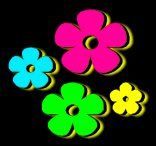 | 1960s
Music & Entertainment | |
|
___________________________________________________________________________________________________________
|
|
|
RetroLisa
_________________________________________________
|
|
|
RetroLisa
| ___________________________________________________________________ | __ | _____________________________ | _______ | Music News & Trends
the girl group era
The 1960s began with girl groups and teen idols. Most of these singers did not write their own material. The hits were penned by teams of songwriters, most of whom worked in New York's famous Brill Building. The recordings were arranged by talented producers like Phil Spector, Don Kirshner and Quincy Jones. Phil Spector used elaborate instrumental arrangements and a special echo chamber to create his signature wall of sound.
Girl Groups
Wall Of Sound
folk & protest music
Folk music got its start in the 1930s, when artists like Woody Guthrie and Pete Seeger sang about the problems of the Great Depression. A folk revival in the early 1950s was cut short when musicians were harrassed and blacklisted during the McCarthy anti-communist witch hunts.
In 1958, the folk scene was reborn, stronger than ever. This revival reached its peak in the early 1960s, when the socially relevant music of folk singers could be heard in coffee houses throughout Greenwich Village. Folk music was also very popular on college campuses. During the 1960s, protest songs commented on poverty, war, racism and man's inhumanity to man.
The Great Folk Scare
Protest Songs
Sixties Folk Music
last kiss
A curious musical fad of the early 1960s was the teenage death song. Also known as a tearjerker, teen tragedy song or splatter platter, this musical style spoke to our fascination with dying young.
The rise of the teen tragedy genre occurred at a time when teenagers were losing their heroes unexpectedly. The deaths of James Dean, Sam Cooke, Buddy Holly, and even President Kennedy left many teens scrambling for some way to make sense of it all. The teenage death song was one of those ways.
Teenage Death Songs
- Last Kiss
- Tell Laura I Love Her
- Teen Angel
- Laurie, Strange Things Happen
- The Water Was Red
- Dead Man's Curve
- Patches
- Leader Of The Pack
lounge & exotica
The cocktail lounge lifestyle made exotic records popular during the 1960s. A hot new form of Brazilian jazz known as bossa nova caught on like crazy after it was introduced to American audiences at Carnegie Hall in 1962.
Space Age Pop
Vinyl Safari Guide To Exotic Records
The World Of Exotica
Bossa Nova

the British Invasion
British pop music burst onto the scene in the 1960s with a sound unlike any other. Within the genre, several musical styles were named after the regions where they began. The most notable of these were Merseybeat and Birmingham's Brum Beat.
In the mid 1960s, the success of the Beatles paved the way for other English bands to make the journey "across the pond." This was known as the British Invasion.
The British Beat Boom
Mersey Beat
Merseybeat Nostalgia
The British Music Scene
Brum Beat
soul & Motown
Berry Gordy's Motown sound established itself in the early 1960s. Motown's unique combination of pop and soul music produced songs that appealed to all racial groups. Soul music continued to grow in popularity as the decade came to a close.
Soul Patrol
The Golden Age Of The Motown Sound
progressive sounds
Music in the late 1960s became more experimental and introspective. Our society was growing up and the old musical rules were breaking down.
In America, this led to the freeform rock that was being played in cities like San Francisco. In England, progressive rock was coming to the forefront.
Musicians were writing more of their own songs, playing nontraditional instruments like the sitar, recording with symphony orchestras, and adopting new technologies like the Mellotron and Moog synthesizer. The songs were becoming longer and more complex. In 1967, the first rock concept albums contained songs that were united by a common theme.
Chronology Of San Francisco Rock
Pooter's Psychedelic Shack
Moog Synthesizer
Prog Archives

dancing
Dances like the Frug, Mashed Potato, Twist, Pony, Jerk, Swim, Bostella and Watusi allowed you to dance without touching your partner.
It wasn't unusual for a crazy new dance to be inspired by an equally crazy incident. In 1965, the Bostella (the "all fall down" dance) was reportedly invented in Paris when French journalist Yvan Bostel slipped and fell in public.
Street Swing: The Twist
Dance Crazes Of The 60s
60s Dances
music news
- In 1960, the Beatles began to make appearances outside of their native Liverpool. After replacing Pete Best with Ringo Starr, they recorded their first single in 1962. Beatlemania swept England in 1963 and took America by storm in 1964. The Beatles gave their last performance together as a group in 1969.
- FM stereo was introduced in 1961.
- In 1962, the Telstar satellite inspired an instrumental recording of the same name.
- 1965: When Bob Dylan and The Byrds introduced us to the sounds of folk rock, many folk purists accused Dylan of selling out.
- 1966: John Lennon angered fans when he stated that the Beatles were "more popular than Jesus now."
- 1966: The lines between television and pop music became blurred when TV gave us the first pre-fabricated rock group, The Monkees.
- In 1967, the Monterey Pop Festival introduced us to Janis Joplin, Otis Redding and Jimi Hendrix.
- 1968: Elvis Presley's TV special launched his comeback.
- 1969: Over 400,000 people attended the three-day Woodstock Music and Art Fair.
- 1969: A series of coincidences sparked the Paul is dead rumors, convincing many people that Paul McCartney died back in 1966 and was replaced by an imposter.
- 1969: Violence erupted during a free Rolling Stones concert at the Altamont Speedway, resulting in four deaths and many injuries.
| |

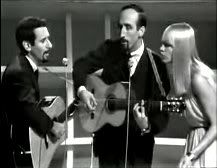
------

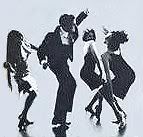
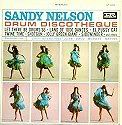
There were plenty of record albums available to help you learn the latest steps
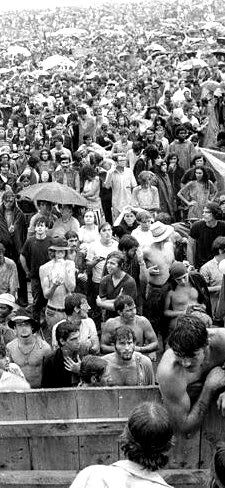
|
_________________________________________________
|
|
|
RetroLisa
| ___________________________________________________________________ | __ | _____________________________ | _______ | promotional videos
The first music performance clips could be found as early as the 1940s, when musicians made short films for use in Panoram video jukeboxes. These machines were installed in many taverns and restaurants of the era.
In 1960, the video jukebox made a comeback when the Scopitone was introduced in France. Unlike the Panoram, which offered eight black & white clips on a single reel, the Scopitone had 36 color clips to choose from. Scopitones came to America in 1964, but they never really caught on, and by 1969 they were old news.
Television was a powerful medium for promoting new music. It was important for artists to follow each new release with appearances on shows like Hullabaloo, Top Of The Pops and The Mike Douglas Show. If they couldn't appear on a particular show in person, a promotional clip was often shown in their place.
Early clips were simple performance pieces. Unlike the videos of today, there were no plots or artistic concepts, just the musicians pretending to sing and play their instruments. Gradually, the clips became more creative, especially in the late 1960s when psychedelic blue screen effects were added.
The Scopitone
Scopitone Archive

| |
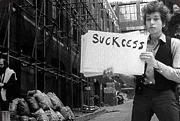
The 1965 clip for Bob Dylan's Subterranean Homesick Blues is widely considered to be the first modern music video. Unlike other clips of the era, it is not a staged performance piece.
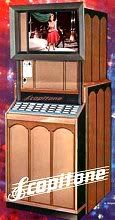
|
__________________________________________
|
|
|
RetroLisa
| ___________________________________________________________________ | __ | _____________________________ | _______ | Radio
AM radio
Catchy tunes, snappy patter....it was all happening at the local Top 40 radio station. What could be better than spending the day at the beach, listening to your favorite DJ on your transistor radio?
Rock Radio Scrapbook
KHJ: Boss Radio
AM Radio Days Nostalgia
WLS: The Bright Sound
WLS Music Radio Surveys
WABC: Musicradio 77
Murray The K
Wolfman Jack
The Real Don Steele
Dick Biondi
Cousin Brucie
FM radio
The first commercial FM radio station went on the air in 1941. FM stereo was introduced in 1961. Although FM provided static-free reception and superior sound, AM continued to be the more popular format well into the 1970s.
During FM's first 25 years, audiences were small and programming was generally limited to educational shows and classical music. When AM and FM stations shared ownership, the same content was usually simulcast on both sides.
This began to change in 1965, when the FCC ruled that all owners of dual AM/FM stations must devote at least 12 hours per day to original programming on the FM side. The new regulation went into effect in 1967. Some FM stations kept their original formats, while others chose to experiment with new formats. Many FM station owners gave their DJs the freedom to play whatever they wanted, and they chose to fill this time with jazz recordings and long, experimental album cuts. This was the origin of the progressive album-oriented rock stations that would become popular in the early 1970s.
A Brief History Of Freeform Radio
Allison Steele, The Nightbird
| |


Hey, transistor sister!
|
_________________________________________________
|
|
|
RetroLisa
| ___________________________________________________________________ | __ | _____________________________ | _______ | Live Entertainment
music festivals
*The first Newport Folk Festival was held in 1959. At the 1965 festival, Bob Dylan introduced us to the sounds of folk rock when he adopted the use of electric guitars.
*The 1967 Monterey Pop Festival featured performers as diverse as Ravi Shankar and Jimi Hendrix. This three-day event was the first major rock festival.
*In England, the tiny Isle of Wight played host to rock festivals in 1968, 1969 and 1970.
*Three days of rain and mud couldn't dampen the spirit at the 1969 Woodstock Festival. It was a magical event, remembered fondly by everyone who was there.
The Woodstock Music & Art Fair
Monterey Pop Festival
Newport Folk Festival
Isle Of Wight Festival
Dylan Goes Electric
concert venues
Before the late 1960s, large concert venues generally featured orchestra performances and stage plays. Rock music was heard at the local teen club or record hop. This began to change in the late 1960s, when concert halls dedicated to rock music opened all across the country. Many old ballrooms were converted into hip venues for psychedelic rock concerts.
Los Angeles
San Francisco
New York City

light shows
These stunning visual effects used special lights, colored oils and overhead projectors to simulate the drug experience during psychedelic rock concerts.
Create A Liquid Light Show
Pooter's Psychedelic Shack: Lightshows
Rainbow Puddle
on stage
*Between 1959 and 1966, Dick Clark's Caravan Of Stars traveled across the country, bringing the top rock acts to local clubs and concert halls. This annual bus tour featured a racially integrated lineup, and was a great way for emerging artists to gain exposure.
*During 1959 and 1960, the Quarrymen played their first gigs in Liverpool at Mrs. Best's new Casbah Coffee Club. In 1960, they changed their name to the Beatles. Between 1960 and 1963, they became the house band at the Cavern Club and appeared in various clubs in Hamburg, Germany.
*At concert halls and nightclubs, you could see traditional vocalists performing pop standards. Blockbuster shows featured the likes of Judy Garland, Barbra Streisand, Bobby Darin, Sammy Davis Jr., Eddie Fisher, Frank Sinatra, Dean Martin and Nat "King" Cole.

*Frank Sinatra, Dean Martin, Sammy Davis Jr., Peter Lawford and Joey Bishop were affectionately known as the Rat Pack.
In 1960, while the gang was in Las Vegas to film Ocean's Eleven, they made appearances at the Copa Room in the Sands Hotel. This era was known as The Summit, and these performances were the stuff legends are made of. They represent an era in entertainment we'll never see again.
Barbra Streisand Live
The Beatles In Hamburg
1960s Frank Sinatra Concerts
Judy Garland: The Live Performances
Dean Martin In Las Vegas
The Rat Pack
| |

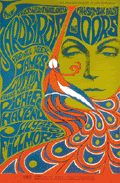
concert posters
Concert posters in the late 1960s had a look all their own.
Psychedelic 60s Rock Handbills
Poster Planet
Bill Graham Posters
Family Dog Posters
Music Posters
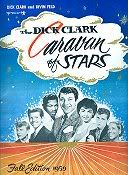
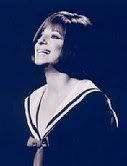
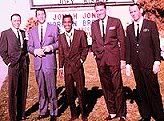
|
_________________________________________________
|
|
|
